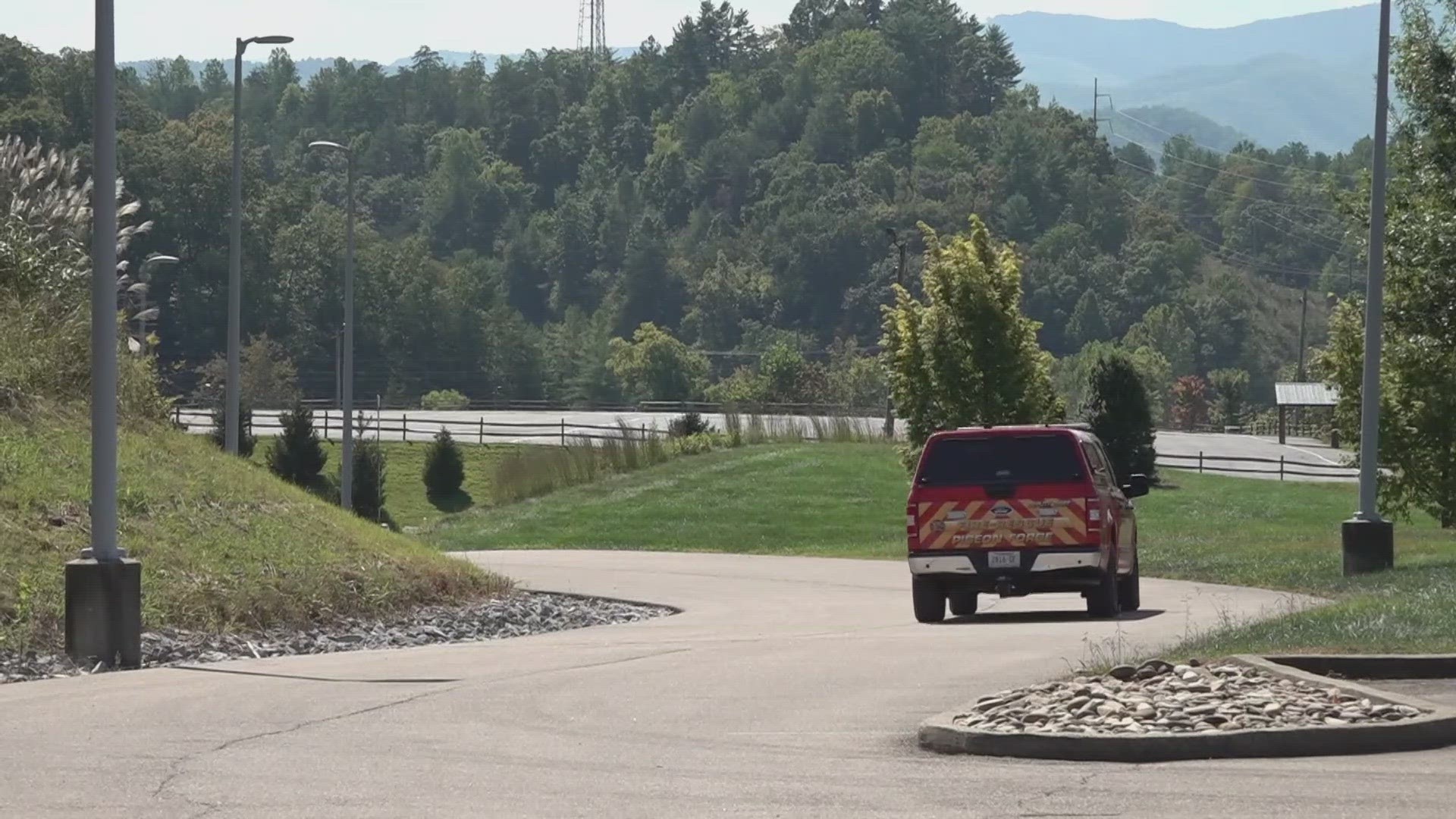SEVIER COUNTY, Tenn. — Dry conditions in East Tennessee are fueling worries ahead of wildfire season in East Tennessee, so fire officials want to make sure people are staying Firewise this time.
East Tennessee fire crews said the area is vulnerable to wildfires from about mid-October through mid-May as dry leaves and brush begins littering the ground, which creates ample fuel that allows fires to spread out of control quickly.
The Tennessee Division of Forestry said the dry September weather we've seen so far has given a jumpstart to the wildfire season. Crews in the Great Smoky Mountains National Park already dealt with a backcountry fire after a small wildfire sparked up Tuesday near Fontana Lake's shore.
The Division of Forestry also reported a small 5-acre fire in Hawkins County that was contained as of Tuesday morning.
Right now, foresters and fire crews are keeping a close eye on wind, dryness and humidity conditions.
“We love the rain... it’s called 'sweet drops of rest' during the fire season,” Pigeon Forge Fire Chief Tony Watson said. “Look at the events, look at Hawaii, look at all these events that occurs... changing weather patterns. It’s not... I don’t want to be a doomsdayer, but we got to be prepared.”
Lately, those "sweet drops" haven’t been around as much as East Tennessee needs them. Unless it rains more, this September is on track to being the fifth-driest on record compared to previous years.
The Tennessee Division of Forestry said when it comes to wildfires -- people need to pay attention to the warning signs.
“We’ve not had significant rainfall, so you know that’s key,” Nathan Waters, Assistant District Forester State of Tennessee Department of Agriculture, said. “Usually in October the leaves start to change, chlorophyll starts to dissipate in the leaves, they turn they fall off the trees. A lot of trees right now are turning yellow and brown and they’re just dropping.”
The Wildland Fire Task Force stands by in case of an emergency, which is how fire departments in the area communicate to come together and battle larger wildfires, much like the Wear's Valley wildfire in 2022.
“When the Wildland Task Force is activated, all of the fire departments receive an alert,” David Puckett, Chief of Sevier County Fire and Rescue, said.
Officials said the best way to stay safe is to be informed. That means understanding how to prevent fires from spreading, how to protect your home, and to have a plan to keep you and your family safe before wildfires spark up. Tennessee has developed a statewide program with Firewise USA to help people do just that.
To prevent fires from starting in the first place, visit BurnSafeTN.org. As a reminder, burn permits are required in Tennessee between Oct. 15 and May 15 before burning any debris in areas without local restrictions. People should do the following before conducting any burning activity during wildfire season:
- Check with local authorities to make sure there are no local restrictions on burning currently in place, especially in cities and towns that have their own burning permit system.
- GET A PERMIT. A permit is required from the Tennessee Division of Forestry between October 15 to May 15 where local restrictions do not supersede.
- Notify your local fire department and neighbors to let them know your plans to burn
- Do not burn on windy days
- Stay abreast of changing weather conditions
- Establish wide control lines down to bare mineral soil at least five feet wide around burn piles
- Keep fire containment equipment on hand during the fire (e.g. rake, shovel, water)
- Stay with the fire until it is completely out.
Tennessee offers a Firewise safety checklist for homes at this link.
Here's Tennessee Wildland Fire's recommended disaster plan:
- Emergency Access: Identify your home and neighborhood with clearly marked reflective numbers and street names so that first responders can quickly locate the emergency.
- Access: Your driveway should be at least 12 feet wide with a vertical clearance of 15 feet to allow emergency vehicle access.
- Contact: Post the phone number to the local fire department in an obvious location.
- Evacuation: If you must evacuate, decide where you will go and how you will get there. Two escape routes out of your home and neighborhood are recommended.
- Tools: Keep a shovel, rake, axe, handsaw, and a 2-gallon bucket readily available.
- Pets: Have a plan for your pets in case of emergency. A leash and/or crate should be easily accessed if evacuation is required.
- Practice: Practice family fire drills to prepare for a fire emergency.
The Division of Forestry also tracks and reports wildfires in Tennessee at this link.

